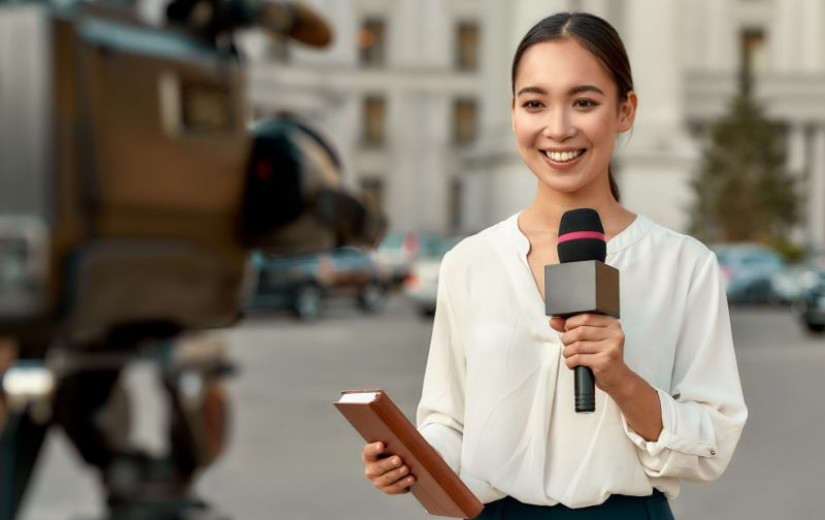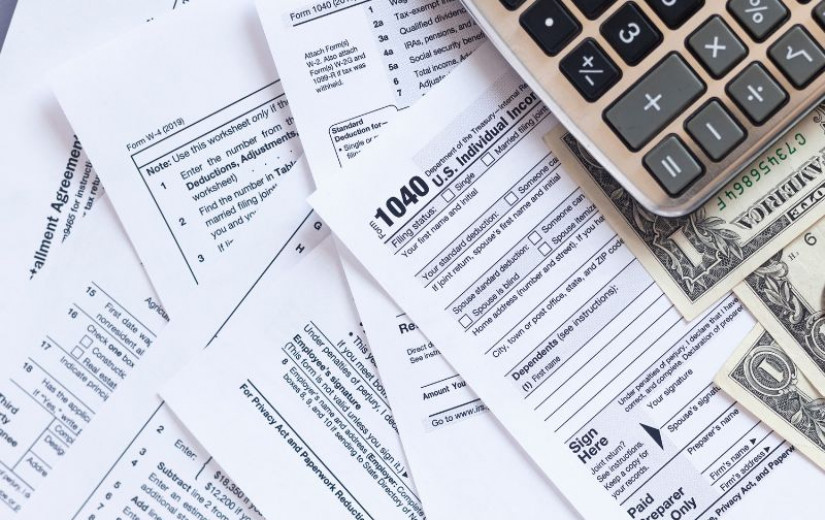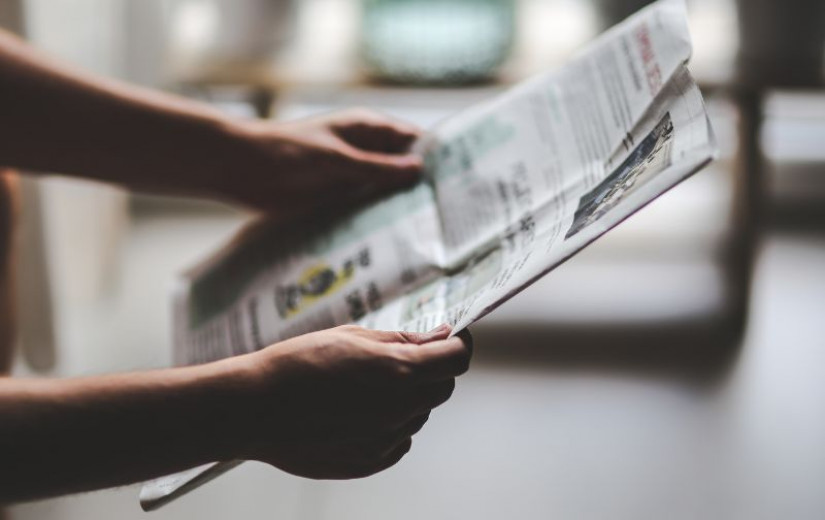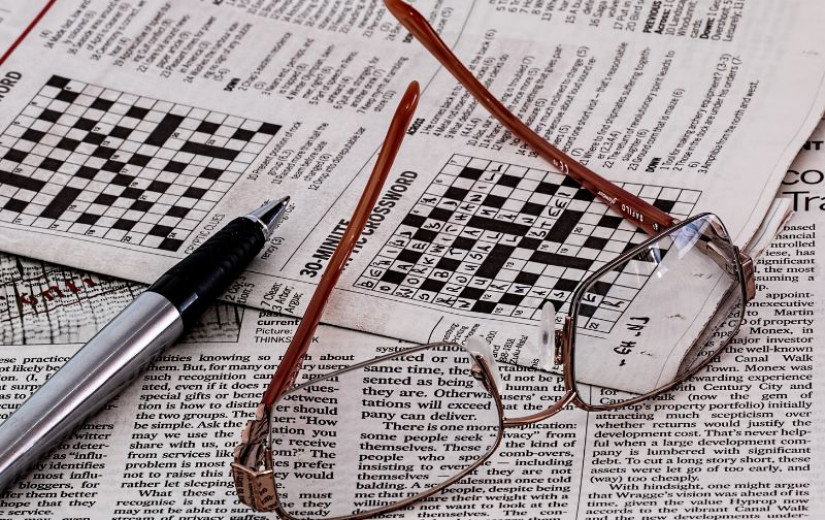
JENA, La. — Columbia University graduate student Mahmoud Khalil can be forced out of the country as a national security risk, an immigration judge in Louisiana ruled Friday after lawyers argued the legality of deporting the activist who participated in pro-Palestinian demonstrations.
The government’s contention that Khalil’s presence in the U.S. posed “potentially serious foreign policy consequences” satisfied requirements for deportation, Immigration Judge Jamee E. Comans said at a hearing in Jena.
Comans said the government “established by clear and convincing evidence that he is removable.”
After the immigration court hearing, Khalil attorney Marc Van Der Hout told a New Jersey federal judge that Khalil will appeal to the Board of Immigration Appeals within weeks.
People are also reading…
“So nothing is going to happen quickly,” he said.

FILE - Student negotiator Mahmoud Khalil is seen at a pro-Palestinian protest encampment on the Columbia University campus in New York, April 29, 2024. (AP Photo/Ted Shaffrey, File)
Addressing the judge at the end of the immigration hearing, Khalil recalled her saying at a hearing earlier in the week that “there's nothing more important to this court than due process rights and fundamental fairness."
“Clearly what we witnessed today, neither of these principles were present today or in this whole process,” he added. "This is exactly why the Trump administration has sent me to the court, 1,000 miles away from my family."
Van Der Hout, also criticized the hearing's fairness.
“Today, we saw our worst fears play out: Mahmoud was subject to a charade of due process, a flagrant violation of his right to a fair hearing, and a weaponization of immigration law to suppress dissent," Van Der Hout said in a statement.
Khalil, a legal U.S. resident, was detained by federal immigration agents March 8 in the lobby of his university-owned apartment, the first arrest under President Donald Trump’s promised crackdown on students who joined campus protests against the war in Gaza.
Within a day, he was flown across the country to an immigration detention center in Jena, far from his attorneys and wife, a U.S. citizen due to give birth soon.
Khalil’s lawyers challenged the legality of his detention, saying the Trump administration is trying to block free speech protected by the First Amendment.
Secretary of State Marco Rubio cited a rarely used statute to justify Khalil’s deportation, which gives him power to deport those who pose “potentially serious adverse foreign policy consequences for the United States.”
At Friday’s hearing, Van Der Hout told the judge that the government’s submissions to the court prove the attempt to deport his client “has nothing to do with foreign policy” and said the government is trying to deport him for protected speech.

Protesters rally in support of detained Palestinian activist Mahmoud Khalil, Friday, March 14, 2025, in New York. (AP Photo/Jason DeCrow)
Khalil, a Palestinian born and raised in Syria after his grandparents were forcibly removed from their ancestral home in Tiberias, isn’t accused of breaking any laws during the protests at Columbia.
The government, however, has said noncitizens who participate in such demonstrations should be expelled from the country for expressing views that the administration considers to be antisemitic and “pro-Hamas,” referring to the Palestinian militant group that attacked Israel on Oct. 7, 2023.
Khalil, a 30-year-old international affairs graduate student, served as a negotiator and spokesperson for student activists at Columbia University who took over a campus lawn last spring to protest Israel’s military campaign in Gaza.
The university summoned police to dismantle the encampment after a small group of protesters seized an administration building. Khalil is not accused of participating in the building occupation and wasn’t among those arrested.
But images of his maskless face at protests and his willingness to share his name with reporters drew scorn from those who viewed the protesters and their demands as antisemitic. The White House accused Khalil of “siding with terrorists” but hasn't cited support for the claim.
Federal judges in New York and New Jersey ordered the government not to deport Khalil while his case plays out in multiple courts.
The Trump administration said it is taking at least $400 million in federal funding away from research programs at Columbia and its medical center to punish it for not adequately fighting what it considers to be antisemitism on campus.
Some Jewish students and faculty members complained about being harassed during the demonstrations or ostracized because of their faith or their support of Israel.
Immigration authorities cracked down on other critics of Israel on college campuses, arresting a Georgetown University scholar who spoke out on social media about the Israel-Gaza war, canceling the student visas of some protesters and deporting a Brown University professor who they said attended the Lebanon funeral of a leader of Hezbollah, another militant group that fought with Israel.
___
Brumback reported from Atlanta. Associated Press reporter Larry Neumeister in New York contributed.
A visual history of campus protests in the US
A visual history of campus protests in the US

The current wave of pro-Palestinian protests on college campuses has thrust the long history of student activism in the United States into the national spotlight.
The student-led rallies, encampments, and building takeovers that began at Columbia University in New York City on April 17 and spread to campuses nationwide are not without precedent. Nor are the varied outcomes of the protests. From authorities clamping down on protestors to instances of violence and destruction—and, in some cases, peaceful resolution—echoes of the past are present in pro-Palestinian demonstrations today.
Stacker curated a collection of photographs of student-led demonstrations from the last century to contextualize the history of protest movements on American college campuses.
Campus protests trace back at least a century to Fisk University, where protests in the 1920s against then-campus President Fayette McKenzie served as a precursor to the Civil Rights Movement. From hunger strikes during the Vietnam War to recent "die-ins" pushing for gun control reform, campus activism has long challenged political and social norms, often bringing simmering issues to the forefront of public consciousness.
College protests have long drawn attention to issues of racial and gender equity, at times advancing or pushing back against legislation. In 1976, the women's crew team at Yale staged a "strip-in" to protest their lack of resources, an early flex of Title XI legislation. Nearly five decades later, students at the University of Austin, Texas, marched for a different sort of autonomy, going to the State Capitol in protest of the state's impending sweeping abortion ban.
Pro-Palestinian protestors say their goals include expressing solidarity with Palestinian rights and raising awareness about the rising death toll and ongoing humanitarian crisis in Gaza. Some groups are calling for universities to sever financial ties with companies they see as benefiting from Israel's military campaign in Gaza, an offensive launched in response to the Oct. 7, 2023, attacks.
Not all protests have proceeded—or ended—peacefully. Some students have offered stark examples of protests that cross the line from criticism of Israel into antisemitism. Classmates, in certain instances, attest to the hostile environment for Jewish students and threats to their safety.
After weeks of escalating tensions on campuses, in early May, law enforcement was called in at various universities across the country to break up pro-Palestinian encampments and disperse students. Some resulted in skirmishes and arrests; others took a violent turn. At least four universities, however, have seen peaceful outcomes. At Rutgers University in New Jersey and Brown University in Rhode Island, students agreed to dismantle encampments after the administration agreed to consider their demands.
While commentators have been quick to draw parallels between 2024 and the social justice movements of 1968, making historical comparisons is always thorny—particularly when complex issues are reduced to single events or examples.
The current movement faces a particular challenge in balancing students' right to congregate and speak freely with the right for all students to feel safe on campus. Each movement is unique, as the photos below attest.

1933: Columbia University students strike in defense of 'academic freedom'

In 1933, Columbia failed to reappoint Donald Henderson, an economics instructor who was ostensibly let go because of his role as a Columbia Social Problems Club leader. In other words, Henderson liaised with communists or was one himself. Protesters in support of Henderson fought hand-to-hand with supporters of the opposition, and police broke up the fighting with nightsticks. Even famed Mexican artist Diego Rivera got in on the action.
1940: Students for Peace protest America's involvement in WWII

While many World War II images depict young people proudly going off to serve their country, there was opposition among them. Campus groups like Students for Peace Against Involvement of America in War and early pacifist organizations like the War Resisters League set the foundation for "revolutionary nonviolence." Student concerns included imperialism, colonialism, and profiteering from war.
1968: UC Berkeley's anti-draft 'Vietnam Commencement'

In a somber ceremony, thousands of students attended an anti-draft "Vietnam Commencement'' at the University of California, Berkeley, where some pledged to refuse military service. The 1968 ceremony, which resembled a graduation, took place in Berkeley's Sproul Hall, the current site of a pro-Palestinaian sit-in. The school had already been famous for protests in 1964 during the student-led Free Speech Movement (anti-war, civil rights). Though the Vietnam War would drag on for another six years, 1968 was an inflection point for conscientious objectors, often young men ages 18 to 35 eligible for conscription under the Selective Service Act.
1968: Howard University students call for radical administration change

In 1968, Howard University students took over an administrative building to demand drastic changes at the storied historically Black university. Among their conditions were a greater emphasis on African-American studies and a change in administrative leadership. "Our demand is an answer—we want you to say publicly what you think about these issues," Adrienne Manns Israel, one of the original protest organizers, told the Zinn Education Project.
1968: Students for a Democratic Society occupies Hamilton Hall at Columbia University

Protests culminated from the Civil Rights Movement, anti-Vietnam War sentiment, and the discovery that Columbia was financially tied to arms supporting the Vietnam War. More than 1,000 protesters took over five buildings and the dean was taken hostage. The events at Columbia were later called "the most powerful and effective student protest in modern American history" in historian Mark D. Naison's 2002 memoir, "White Boy."











